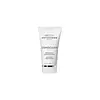What's inside
What's inside
 Key Ingredients
Key Ingredients

 Benefits
Benefits

 Concerns
Concerns

 Ingredients Side-by-side
Ingredients Side-by-side

Water
Skin ConditioningMyristic Acid
CleansingGlycerin
HumectantBehenic Acid
CleansingPotassium Hydroxide
BufferingPalmitic Acid
EmollientSodium Methyl Cocoyl Taurate
CleansingLauric Acid
CleansingStearic Acid
CleansingSucrose
HumectantMontmorillonite
AbsorbentSilybum Marianum Extract
Skin ConditioningGentiana Lutea Root Extract
Skin ConditioningAlgae Extract
EmollientSodium Hyaluronate
HumectantSorbitol
HumectantCaffeine
Skin ConditioningZinc PCA
HumectantPEG-3 Distearate
EmulsifyingKaolin
AbrasiveParfum
MaskingDisodium EDTA
Methylchloroisothiazolinone
PreservativeMethylisothiazolinone
PreservativeWater, Myristic Acid, Glycerin, Behenic Acid, Potassium Hydroxide, Palmitic Acid, Sodium Methyl Cocoyl Taurate, Lauric Acid, Stearic Acid, Sucrose, Montmorillonite, Silybum Marianum Extract, Gentiana Lutea Root Extract, Algae Extract, Sodium Hyaluronate, Sorbitol, Caffeine, Zinc PCA, PEG-3 Distearate, Kaolin, Parfum, Disodium EDTA, Methylchloroisothiazolinone, Methylisothiazolinone
Water
Skin ConditioningPropylene Glycol Stearate Se
EmulsifyingDisodium Laureth Sulfosuccinate
CleansingButylene Glycol
HumectantCetyl Alcohol
EmollientLaureth-2
CleansingC12-14 Pareth-3
EmulsifyingSodium Lauroyl Oat Amino Acids
CleansingParfum
MaskingFructooligosaccharides
HumectantChlorphenesin
AntimicrobialDisodium EDTA
Phenoxyethanol
PreservativeGlyceryl Oleate
EmollientSodium Benzoate
MaskingPotassium Sorbate
PreservativePropylene Glycol
HumectantGlycerin
HumectantLaureth-3
EmulsifyingLauryl Glucoside
CleansingPeumus Boldus Leaf Extract
MaskingPentylene Glycol
Skin ConditioningCarnosine
Skin Conditioning1,2-Hexanediol
Skin ConditioningCaprylyl Glycol
EmollientAlgae Extract
EmollientDisodium Adenosine Triphosphate
Skin ConditioningEthylhexylglycerin
Skin ConditioningXanthan Gum
EmulsifyingSodium Hydroxide
BufferingLecithin
EmollientAscorbyl Palmitate
AntioxidantTocopherol
AntioxidantHydrogenated Palm Glycerides Citrate
EmollientWater, Propylene Glycol Stearate Se, Disodium Laureth Sulfosuccinate, Butylene Glycol, Cetyl Alcohol, Laureth-2, C12-14 Pareth-3, Sodium Lauroyl Oat Amino Acids, Parfum, Fructooligosaccharides, Chlorphenesin, Disodium EDTA, Phenoxyethanol, Glyceryl Oleate, Sodium Benzoate, Potassium Sorbate, Propylene Glycol, Glycerin, Laureth-3, Lauryl Glucoside, Peumus Boldus Leaf Extract, Pentylene Glycol, Carnosine, 1,2-Hexanediol, Caprylyl Glycol, Algae Extract, Disodium Adenosine Triphosphate, Ethylhexylglycerin, Xanthan Gum, Sodium Hydroxide, Lecithin, Ascorbyl Palmitate, Tocopherol, Hydrogenated Palm Glycerides Citrate
 Reviews
Reviews

Ingredients Explained
These ingredients are found in both products.
Ingredients higher up in an ingredient list are typically present in a larger amount.
Algae Extract is a confusing name. This is because algae is an informal term for a group of 30,000 aquatic organisms that can photosynthesize.
The term 'algae extract' can refer to any one, or a blend of, the 30,000 types.
Algae is rich in antioxidants. Antioxidants help fight free-radicals. Free-radicals are molecules that may damage your skin cells, such as pollution.
Algae can also help with soothing and hydrating skin.
Many different types of algae have different benefits.
Learn more about Algae ExtractDisodium EDTA plays a role in making products more stable by aiding other preservatives.
It is a chelating agent, meaning it neutralizes metal ions that may be found in a product.
Disodium EDTA is a salt of edetic acid and is found to be safe in cosmetic ingredients.
Learn more about Disodium EDTAGlycerin is already naturally found in your skin. It helps moisturize and protect your skin.
A study from 2016 found glycerin to be more effective as a humectant than AHAs and hyaluronic acid.
As a humectant, it helps the skin stay hydrated by pulling moisture to your skin. The low molecular weight of glycerin allows it to pull moisture into the deeper layers of your skin.
Hydrated skin improves your skin barrier; Your skin barrier helps protect against irritants and bacteria.
Glycerin has also been found to have antimicrobial and antiviral properties. Due to these properties, glycerin is often used in wound and burn treatments.
In cosmetics, glycerin is usually derived from plants such as soybean or palm. However, it can also be sourced from animals, such as tallow or animal fat.
This ingredient is organic, colorless, odorless, and non-toxic.
Glycerin is the name for this ingredient in American English. British English uses Glycerol/Glycerine.
Learn more about GlycerinParfum is a catch-all term for an ingredient or more that is used to give a scent to products.
Also called "fragrance", this ingredient can be a blend of hundreds of chemicals or plant oils. This means every product with "fragrance" or "parfum" in the ingredients list is a different mixture.
For instance, Habanolide is a proprietary trade name for a specific aroma chemical. When used as a fragrance ingredient in cosmetics, most aroma chemicals fall under the broad labeling category of “FRAGRANCE” or “PARFUM” according to EU and US regulations.
The term 'parfum' or 'fragrance' is not regulated in many countries. In many cases, it is up to the brand to define this term.
For instance, many brands choose to label themselves as "fragrance-free" because they are not using synthetic fragrances. However, their products may still contain ingredients such as essential oils that are considered a fragrance by INCI standards.
One example is Calendula flower extract. Calendula is an essential oil that still imparts a scent or 'fragrance'.
Depending on the blend, the ingredients in the mixture can cause allergies and sensitivities on the skin. Some ingredients that are known EU allergens include linalool and citronellol.
Parfum can also be used to mask or cover an unpleasant scent.
The bottom line is: not all fragrances/parfum/ingredients are created equally. If you are worried about fragrances, we recommend taking a closer look at an ingredient. And of course, we always recommend speaking with a professional.
Learn more about ParfumWater. It's the most common cosmetic ingredient of all. You'll usually see it at the top of ingredient lists, meaning that it makes up the largest part of the product.
So why is it so popular? Water most often acts as a solvent - this means that it helps dissolve other ingredients into the formulation.
You'll also recognize water as that liquid we all need to stay alive. If you see this, drink a glass of water. Stay hydrated!
Learn more about Water